5G technology has the capacity to speed data transfers and connect billions of devices at a time when mission success hinges on fast, secure access to data and people. 5G’s potential to enhance all government activities makes it an indispensable component of efforts to modernize IT systems and service delivery. Because of its low latency and capacity to carry vast amounts of data quickly and efficiently, 5G enables real-time access to information. As a result, it is facilitating the growth of smart cities, the use of artificial intelligence to improve government operations and the adoption of edge computing. The implications are profound for activities as varied as battlefield communications, military logistics and preparedness, and emergency response in situations where critical infrastructure is unavailable. Learn how government agencies can leverage all the resources in play to achieve the goal of open, interoperable and secure 5G networks Carahsoft’s Innovation in Government® report.
The Unifying Nature of 5G Technology
“5G technology is the first telecommunications standard that is cloud-native, making it critical for the government’s digital transformation. We now have a transport medium that aligns with and supports the flexibility, scalability and efficiency of cloud operating models and containerized functions and services. In addition, all aspects of a digital transformation strategy — including edge computing, artificial intelligence, cloud migration and application rationalization — center on data. With everything level-set architecturally to be cloud-native and containerized, 5G networks enable a common approach to managing data, and they also bring in a new capability for data sovereignty.”
Read more insights from Chris D. Thomas, technical strategist at Dell Technologies.
Why 5G Is Indispensable for Frontline Agencies
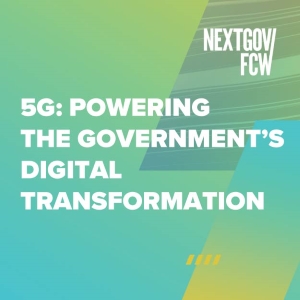 “Private 5G networks have distinct benefits for government, which is why DOD has stated that it is a strategic direction for the department. At Federated Wireless, we custom-build networks for high performance, scale and unlimited capacity using best-of-breed technology from a large ecosystem of suppliers. Private wireless networks provide strong security and control over where the data resides. Unlike a traditional cellular carrier that sends data through an off-site central core, private 5G networks are secure enclaves that are governed by zero trust architectures.”
“Private 5G networks have distinct benefits for government, which is why DOD has stated that it is a strategic direction for the department. At Federated Wireless, we custom-build networks for high performance, scale and unlimited capacity using best-of-breed technology from a large ecosystem of suppliers. Private wireless networks provide strong security and control over where the data resides. Unlike a traditional cellular carrier that sends data through an off-site central core, private 5G networks are secure enclaves that are governed by zero trust architectures.”
Read more insights from Paul Battaglia, vice president of public sector at Federated Wireless.
The Key to Creating More Flexible 5G Networks
“JMA Wireless embarked on a project a couple of years ago to help bring 5G to the Marine Corps Logistics Base in Albany, GA. We were part of a team that deployed a 5G network and added applications to enable officials to modernize warehousing and logistics at the base. As a result of those improvements, the base has reduced labor costs by 61%. Additionally, it used to take three to five days for items to move from the dock to the shelf. That timeline has been slashed to about 36 minutes as the combination of the 5G network and updated application environment drives major efficiencies in logistics operations.”
Read more insights from Rishi Bhaskar, senior vice president and general manager at JMA Wireless.
Sharing Critical Information in Real Time
“The deployment of 5G for government agencies requires a security approach that is independent from the underlying transport network. For our public safety and defense customers, we offer a security architecture based on Blackned’s TacticalCORE, which provides an over-the-top multidomain security layer, enabling authentication in contested environments and separate classified information spaces across the same infrastructure. All transport is considered untrusted with the ability to implement agency-specific encryption on the 5G network. This state-of-the-art security approach has already been accredited by the German BSI as NATO-restricted and enhanced security classifications are planned.”
Read more insights from Richie Obermayer, VP of technical sales at GuardSTACK Technologies.
How Agencies Can Reap the Benefits of 5G
“5G’s reliability and availability make it possible to build dedicated wireless networks that can be sliced so mission-critical applications run in separate areas while the government maintains full control over that network. Last but certainly not least, 5G networks have carrier-grade, built-in security standards, including SIM cards that are provisioned and activated for a specific network. Users cannot connect to the network without inserting a highly secure SIM into their devices.”
Read more insights from Derrick Frost, senior vice president of operations and general manager of private wireless at Kajeet.
Private Networks and the Evolving 5G Ecosystem
“Private networks are well-suited to agency use cases for a number of reasons. First and foremost is security, which is the bedrock of every cellular network. Beyond the built-in security private 5G networks bring, they also have the capacity to add extra layers of security. The other components of a robust network include radio frequency technology and the latest 5G devices and radios. Once that foundation is in place, agencies can explore the wide range of use cases that a private 5G network can address. Deployments include standalone networks for first responders, border patrol agents and tactical response units, as well as secure, reliable networks for telemedicine providers.”
Read more insights from Derek Gallagher, CTO at Druid Software.
Download the full Innovation in Government® report for more insights from 5G thought leaders and additional industry research from FCW.

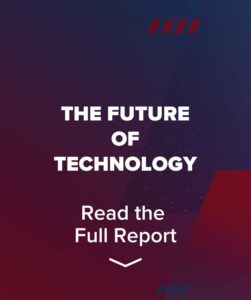
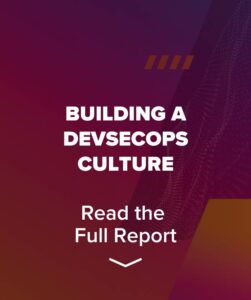
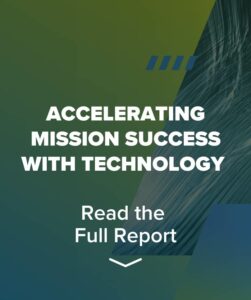
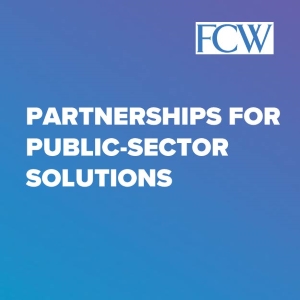 “Success for integrators and their partners is delivering secure solutions that provide meaningful and impactful mission outcomes. Leidos invests heavily in testing and building relevant solutions for public-sector customers to ensure that innovative technologies are cost-effective, resilient, compliant with government requirements and best positioned to solve mission problems. Investing in a continuous innovation cycle is critical. Leidos and Red Hat recognize that we are in the business of continuous modernization. When Red Hat and other key partners offer innovative new solutions, our partnerships enable us to move fast in testing and proving that the technology works and can scale to meet the government’s needs. Leidos leverages innovative technology to drive great mission outcomes in our Aviation Security Product business unit (Security Enterprise Solutions). By using cloud-native AI/ML modeling solutions, Leidos had been able to achieve significant performance gains in our process for developing algorithms for security detection products, ultimately improving travelers’ experiences at airports.”
“Success for integrators and their partners is delivering secure solutions that provide meaningful and impactful mission outcomes. Leidos invests heavily in testing and building relevant solutions for public-sector customers to ensure that innovative technologies are cost-effective, resilient, compliant with government requirements and best positioned to solve mission problems. Investing in a continuous innovation cycle is critical. Leidos and Red Hat recognize that we are in the business of continuous modernization. When Red Hat and other key partners offer innovative new solutions, our partnerships enable us to move fast in testing and proving that the technology works and can scale to meet the government’s needs. Leidos leverages innovative technology to drive great mission outcomes in our Aviation Security Product business unit (Security Enterprise Solutions). By using cloud-native AI/ML modeling solutions, Leidos had been able to achieve significant performance gains in our process for developing algorithms for security detection products, ultimately improving travelers’ experiences at airports.” “For government agencies, security is a key consideration when adopting cloud technologies. The latest solutions can actually help agencies improve their security posture because of the specialized and deep focus that cloud providers bring to their mission of providing scalable and secure compute, network and storage infrastructure. At Google, we take a defense-in-depth approach to security and have over 1,000 professionals whose sole job is to ensure the security of our customers’ data and systems. They have made it their mission to prevent bad actors — whether people, companies or nation-states — from accessing customers’ data.”
“For government agencies, security is a key consideration when adopting cloud technologies. The latest solutions can actually help agencies improve their security posture because of the specialized and deep focus that cloud providers bring to their mission of providing scalable and secure compute, network and storage infrastructure. At Google, we take a defense-in-depth approach to security and have over 1,000 professionals whose sole job is to ensure the security of our customers’ data and systems. They have made it their mission to prevent bad actors — whether people, companies or nation-states — from accessing customers’ data.”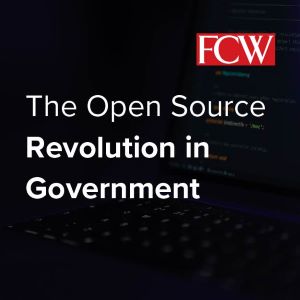 “Open source transforms the way agencies manage hybrid and multi-cloud environments. The most critical technology in the cloud, across all providers, is Linux. Everything is built on top of that foundation — both the infrastructure of the cloud and cloud offerings. Given the right partner, the promise of Linux is that it provides a consistent technology layer for agencies across all footprints, including multiple cloud providers, on-premises data centers and edge environments. From that foundation, agencies and their partners can build portable architectures that leverage other open source technologies. Portability gives organizations the ability to use the same architectures, underlying technologies, monitoring and security solutions, and human skills to manage mission-critical capabilities across all footprints.”
“Open source transforms the way agencies manage hybrid and multi-cloud environments. The most critical technology in the cloud, across all providers, is Linux. Everything is built on top of that foundation — both the infrastructure of the cloud and cloud offerings. Given the right partner, the promise of Linux is that it provides a consistent technology layer for agencies across all footprints, including multiple cloud providers, on-premises data centers and edge environments. From that foundation, agencies and their partners can build portable architectures that leverage other open source technologies. Portability gives organizations the ability to use the same architectures, underlying technologies, monitoring and security solutions, and human skills to manage mission-critical capabilities across all footprints.”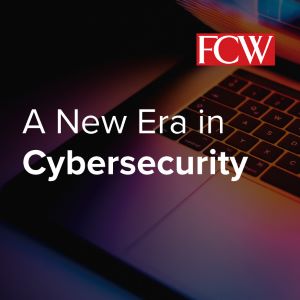 The Importance of Future-Proofing Cybersecurity
The Importance of Future-Proofing Cybersecurity 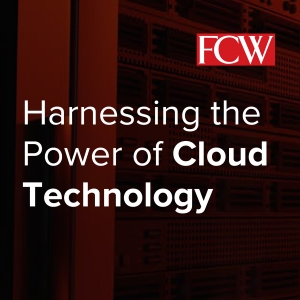 “Most agencies operate hybrid environments that combine on-premises systems with cloud platforms and services. However, there are challenges associated with that approach. Hybrid environments require the ability to manage a diverse set of technologies, tools and operating models and to integrate workloads, applications and services across clouds and on-premises systems. A hybrid cloud environment also changes the traditional security boundary and introduces new vulnerabilities related to the nature of off-premises managed services and the unique attributes of cloud, which include ephemeral services and API-driven, software-defined everything. Fortunately, advanced cloud-based cybersecurity solutions are helping agencies move to zero trust architectures by shifting security services from primary data centers to edge locations to enable rapid analysis and a stronger security posture.”
“Most agencies operate hybrid environments that combine on-premises systems with cloud platforms and services. However, there are challenges associated with that approach. Hybrid environments require the ability to manage a diverse set of technologies, tools and operating models and to integrate workloads, applications and services across clouds and on-premises systems. A hybrid cloud environment also changes the traditional security boundary and introduces new vulnerabilities related to the nature of off-premises managed services and the unique attributes of cloud, which include ephemeral services and API-driven, software-defined everything. Fortunately, advanced cloud-based cybersecurity solutions are helping agencies move to zero trust architectures by shifting security services from primary data centers to edge locations to enable rapid analysis and a stronger security posture.” A second important initiative is the Technology Modernization Fund (TMF), a government action plan intended to provide funding to accelerate technology projects in federal agencies, which has a resource pool of millions of dollars. The TMF will support specific investments and projects benefitting multiple agencies, address shared problems and increase education on technological prowess. However, even if an agency is not accepted by the TMF for additional funding, employees within the TMF and General Services Administration still hope to help agencies gather resources and learning connections with other government agencies. Ultimately, its goal is to support every agency in gaining resources and connections to improve their technology and better serve government customers.
A second important initiative is the Technology Modernization Fund (TMF), a government action plan intended to provide funding to accelerate technology projects in federal agencies, which has a resource pool of millions of dollars. The TMF will support specific investments and projects benefitting multiple agencies, address shared problems and increase education on technological prowess. However, even if an agency is not accepted by the TMF for additional funding, employees within the TMF and General Services Administration still hope to help agencies gather resources and learning connections with other government agencies. Ultimately, its goal is to support every agency in gaining resources and connections to improve their technology and better serve government customers.